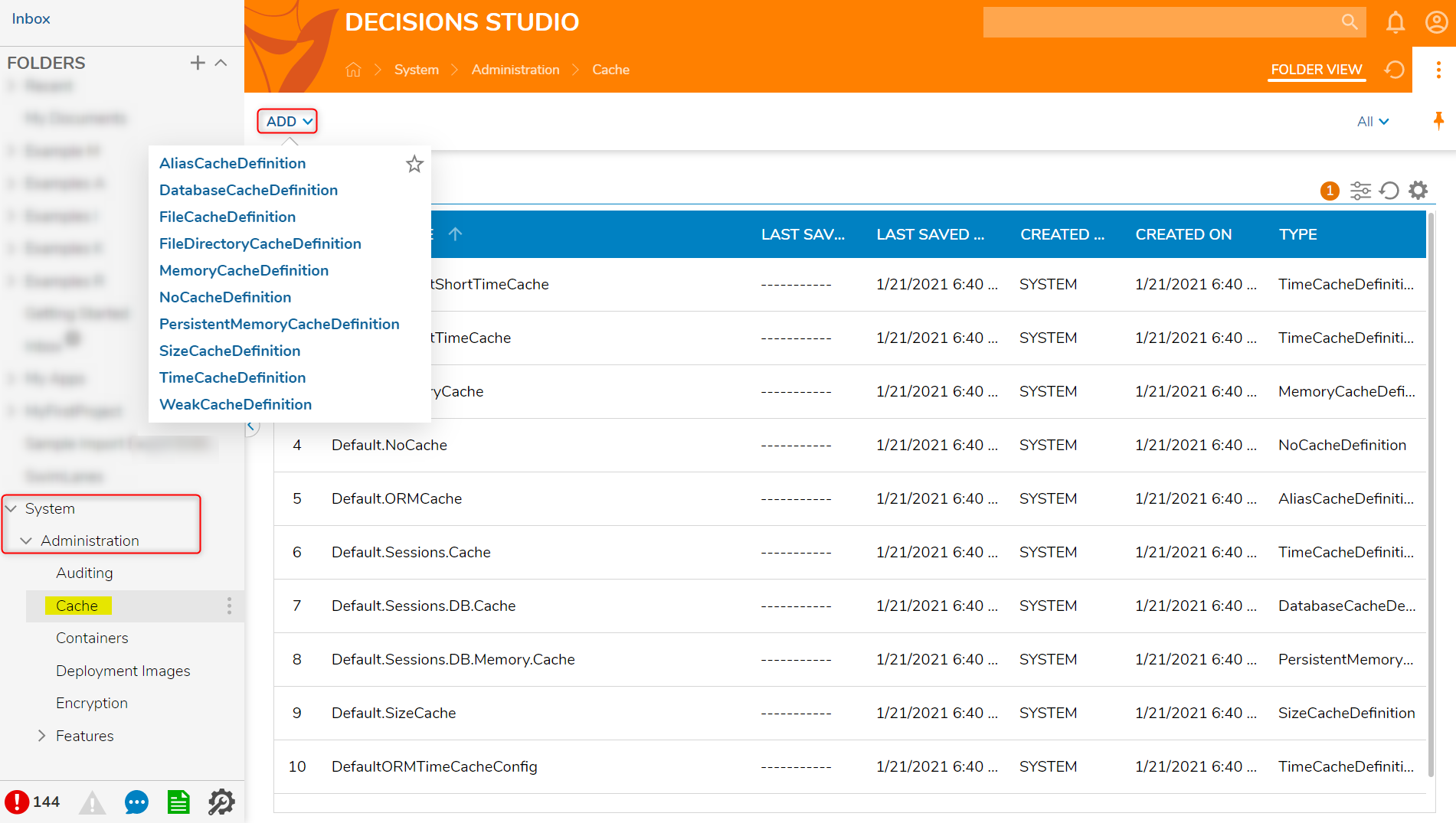Overview
Cache Steps are the primary way a user will use caches in Decisions. The primary function of the cache is to store data temporarily for quicker access in the future. Cache storage is commonly used in scenarios where data results from an external system need to be stored in a location that the data will not be frequently edited (e.g. Data received from REST API Calls or via an External Database, etc). Another scenario where Cache Steps are recommended is when a user is fetching data from Flow A to use in Flow B.
Example
To create a new Cache Definition navigate to System > Administration > Cache.
Cached data is stored in the App Server Memory and only meant to be temporary.In the top action panel select ADD. The resulting drop down component allows the user to add a new CacheDefinition.

Below is a definition table to help provide information on the different Cache types.
Primary Cache Types
These Cache definitions summarize the storage location of the different Cache types.
| Cache Definition | Summary |
|---|---|
| Database | Stored in Database Table |
| File | Stored in a File |
| File Directory | Stored in File Directory |
| Memory | Stored in Memory (RAM) |
| NoCache | Cache data will not be stored anywhere. The data will be ignored; this is an advanced Cache that excludes certain objects. |
| Weak | Keeps an object in the cache unless the object is disposed |
Secondary Cache Types
These Cache definitions are policies by which the cache will store and empty data.
| Cache Definition | Summary |
|---|---|
| Alias | Stores data under a different target Configuration Name |
| PersistentMemory | Auto resets the memory cache based on user input |
| Size | Stores data in the cache based on object size |
| Time | Stores the data for a time span based on user input |